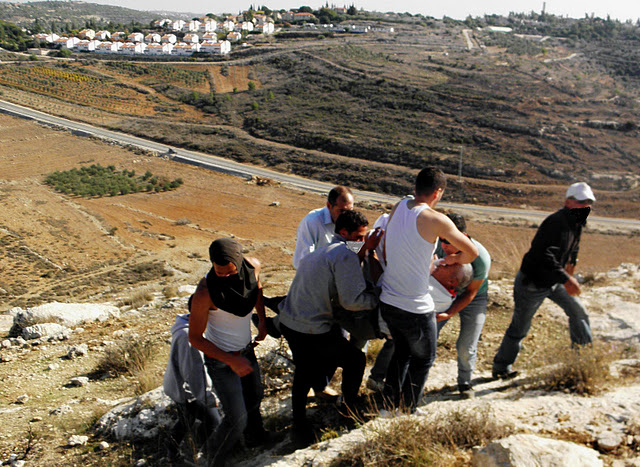-
Palestinian Freedom Riders to ride settler buses to Jerusalem
13 November 2011 | Freedom Riders Inspired by the Freedom Rides of the US Civil Rights Movement Palestinian activists will attempt to board segregated Israeli settler buses to occupied East Jerusalem Groups of Palestinian Freedom Riders will attempt to board segregated settler buses heading to Jerusalem through the occupied West Bank this Tuesday November 15, […]
-
Proceedings in US national’s civil suit over West Bank injury to begin
13 November 2011 | Popular Struggle Coordination Committee UPDATE: The opening court date has been postponed from 17 November to 24 November 2011. Tristan Anderson, a US National, suffered a life-threatening injury after being shot in the head with a high velocity tear-gas projectile during an anti-Wall demonstration on March 13th, 2009. On 13 March 2009, Israeli Border Police officers shot US activist from California, Tristan Anderson, in the head with a high velocity tear-gas projectile during a demonstration in the West Bank Village of Ni’ilin. He was shot […]
-
As B’TSelem documents shooting of man, employee is arrested
by Aida Gerard 11 November 2011 | International Solidarity Movement, West Bank A 55 year old Palestinian man was taken to hospital from Nabi Saleh due to an injury from a rubber coated steel bullet. After two hours of demonstrating the Israeli Occupation Forces invaded Nabi Saleh and arrested one Palestinian, 36 year old Bilal Tamimi, […]
Action Alert An Nabi Saleh Apartheid Wall Arrests BDS Bethlehem Bil'in Cast Lead Demonstration Denial of Entry Ethnic Cleansing Farmers Gaza Global Actions Hebron House Demolition International law Israeli Army Jerusalem Live Ammunition Nablus Ni'lin Prisoner Ramallah Rubber-coated steel bullets Settlement Settlers Settler violence Tear-Gas Canister Video


